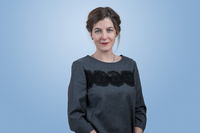The peer-reviewed study, published in the Journal of Global Health, analysed data from more than 6600 families with a child with a neurodevelopmental condition (NDC) - autism, attention-deficit/hyperactivity disorder, developmental language disorder, Down syndrome, Williams syndrome, and intellectual disability - from 70 countries.
Parents were invited to fill in an online questionnaire about their family situation, anxiety levels and concerns during the first wave of the COVID-19 pandemic.
In how parent and child anxiety developed over time and aimed to quantify to what extent families and their children with NDCs were impacted by the COVID-19 pandemic
The authors were interested in how parent and child anxiety developed over time and aimed to quantify to what extent families and their children with NDCs were impacted by the COVID-19 pandemic and how their anxiety levels were mitigated or aggravated by country, family, and individual child factors such as their health or other individual differences or concerns using multilevel modelling. Since the anxiety levels were likely affected by national demographic characteristics or government policy (country level: eg, number of deaths, fiscal measures, overall obesity levels, emergency health care investment), family context (family level: eg, concerns about family safety, family conflict) and child context factors (child level: eg, concerns about loss of routine, becoming ill themselves), the authors integrated data concerning how the pandemic evolved, government responses, and structural descriptors of countries from the European Centre for Disease Prevention and Control, the University of Oxford, and the CIA World Factbook to a multilevel data set.






